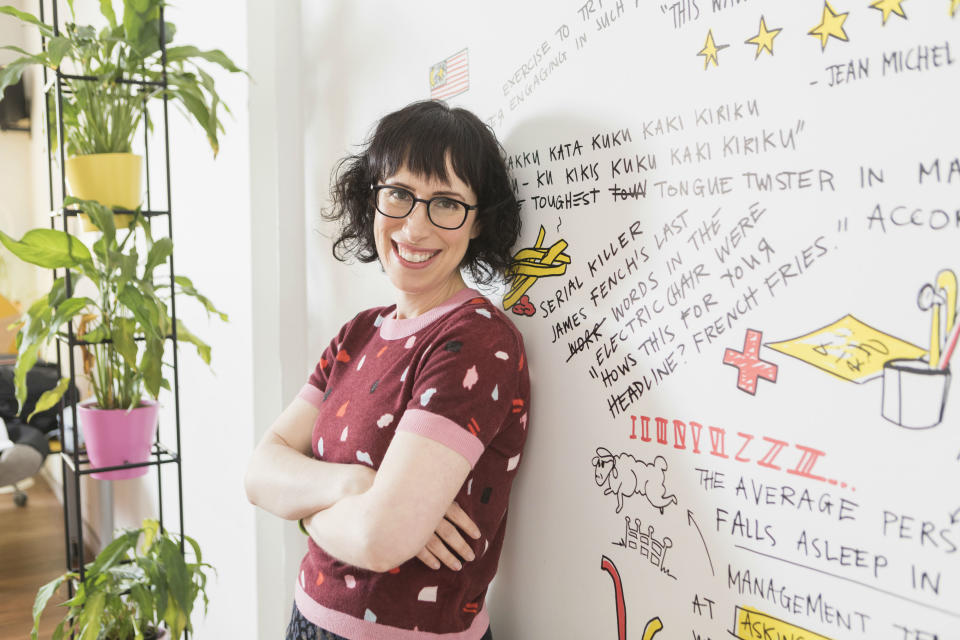What happened when this woman gave her staff unlimited annual leave

The average Australian contract will require workers to be in the office for 37.5 hours a week and will, in return, receive two days off a week and four weeks annual leave.
But, as a combination of higher demands, flexible work agreements and the ability to work digitally take effect, those hours worked can be significantly higher.
Related story: Long weekends could save the Earth. This is why
Related story: The miracle effects of a 5-hour working day
Related story: Workplace flexibility is no longer a perk, it’s a requirement
In fact, according to the Australian Institute, employers receive an average six hours’ free work a week from each employee as workers start early, finish late, take work home and work through lunch breaks.
Despite this, the average annual leave accrued hasn’t shifted.
It’s something Dr Amantha Imber, the founder of Melbourne innovation consultancy Inventium, noticed three years ago and set out to address.
“As a management consultancy, we have consultants who work pretty long hours and travel a lot, as is typical for our industry, and I was reflecting on the fact that in management consulting, hours are essentially uncapped, there's not really such a thing as overtime and leave is capped,” she told Yahoo Finance.
“So I thought, wouldn't it be fairer and also easier for people to balance their work and non-working lives if we uncapped leave just like hours are uncapped?”
Three years later, the policy has been a success.
Related story: How to answer: ‘Why are you leaving your current job?’
Related story: A stay-at-home parent could earn $500,000 salary if they were paid
Related story: What to do if your boss is a bully
Staff are more energetic while the average tenure of Inventium staff has nearly doubled and employee engagement is among the top 10 per cent in the industry, Imber said.
“The intent is about having time to rebalance... It's called rebalance leave and that is the intent. It's basically giving the staff time to rebalance, and it hasn't changed since day one,” she said.
“The quality of work that is done when people feel refreshed and energised is beyond comparison because the quality of work that people produce when they're feeling tired and burnt out is potentially resentful towards their company because they're being worked so hard.”
And while some might suspect the amount of leave taken to jump, the average workers takes five and a half weeks annual leave a year. That might be in the form of a longer holiday, or just a few extra long weekends here and there.
Related story: Atlassian to tie staff bonuses to ‘no bulls**t’ approach to job
Related story: The 7 signs you nailed your job interview
Related story: These jobs that don’t exist yet could end up on your resumé
“I'm a strong believer that if you've got a culture where there's a high level of trust between management and staff, and where people respect each other, and if you treat people like adults, they will behave like adults and that's absolutely been proven true over the last three years,” Imber said.
Unlimited annual leave paired with flexible work
While the new approach to annual leave has left workers happier, a day-to-day flexible work approach has also reaped significant dividends.
Friday is considered a “precious day” in which all staff are required to be either present in the office or available for video conferencing.
Outside of that, however, workers can choose to start work at 5am and finish early, work from a cafe, work from home or even work from an Italian villa as one employee does.
Working in a preferred environment and away from distractions means workers get more work done, faster and with less frustration.
“I think meetings are such a productivity killer in terms of how they're scheduled,” Imber said.
The company recently launched an initiative to target this, encouraging workers to have their meetings in sets of two.
“[If you have meetings], do them back to back,” Imber said, pointing to research from Ohio State University finding that if workers have a meeting in their calendar within the next two hours, they’re 22 per cent less productive as they feel they can’t get stuck into decent work.
“We've had literally hundreds of workers around Australia apply that and get some really amazing results.”
The ability to improve people’s lives at work can’t be understated, Imber continued, as it makes up one third of our lives.
“I occasionally get contacted by CEO's that are thinking of doing a similar kind of thing and I think that's really awesome. For me, I would just like to see more progressive workplaces in Australia because it just gives people the chance to thrive.”
Make your money work with Yahoo Finance’s daily newsletter. Sign up here and stay on top of the latest money, news and tech news.

 Yahoo Finance
Yahoo Finance 
